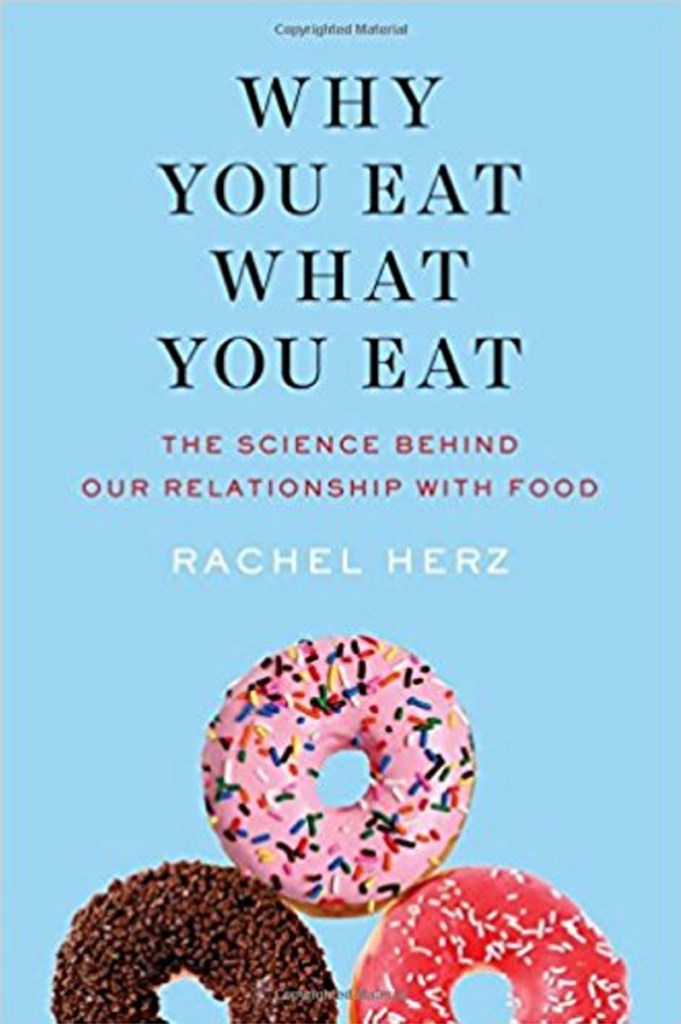“Why You Eat What You Eat: The Science Behind Our Relationship with Food.” By Rachel Herz. 368 pages, hardcover. W.W. Norton. $25.95
Several years back, Cadbury, the English chocolatier, changed the shape of its signature Dairy Milk Bar, taming its square physique into a rounded profile. Though the recipe remained unchanged, aggrieved customers weren’t convinced. The revamped chocolates were said to be oily, sugary, sickly sweet.
Or consider another scenario where a panel of tasters believed they were sampling a new line of chocolates. Unbeknownst to participants, the samples were M&Ms, minus their logo, in green and brown, respectively. Although the candies were identical in composition, panelists deemed the green specimens less chocolatey. In both of these cases, one might reasonably ask what accounted for the disconnect. Can shape and color really alter our perception of a food’s flavor?
These are among the questions posed by neuroscientist Rachel Herz in her fascinating and provocative new book, “Why You Eat What You Eat: The Science Behind Our Relationship With Food.” Herz lays out a smorgasbord of food-centric findings that are, by turns, familiar, instructive and surprising. She surveys the vast, emerging realm of neurogastronomy – how the brain, emotions and environment affect our experience of food – and distills it into bite-size pieces. The result is a blend of research, consumer tips and anecdotes that may well upend some long-held beliefs.
Much of the research cited in the book plays on our expectations and suggestibility. In a test of chicken noodle soup, for instance, tasters sampled both regular and reduced sodium varieties. When a “regular” package was deliberately mislabeled as low-sodium, tasters found it lacking, despite their preference for the regular soup. In other words, if they expected a low-sodium product, that’s what they perceived. A more extreme (and cynical) variation on this theme took place in France, where wine experts tested two Bordeaux – one white, one red. They likened the white to honey and caramel, the red to blackcurrant and cherry. In fact, the wines were identical – the only difference was the addition of a flavorless red dye.
As these and countless other examples attest, our encounters with food aren’t nearly as self-directed as we’d like to believe. It’s largely mind over matter – and a bonanza for marketers.
Herz details an exhaustive list of factors that influences nearly every aspect of our eating: The shape, size, weight and color of plates and bowls; the lighting in the room; our access and proximity to food. Indeed the single biggest determinant of how much we eat is the number of people at the table; the logic being that more people make for a longer, more abundant meal. Nor does this even scratch the surface of how moods and flavors interact, or how certain food-buying habits affect other behavior. Bringing reusable bags to the store, for instance, often primes the purchase of organic products. Yet surprisingly, shoppers often reward their eco-friendly conduct by buying more treats, such as candy and chips.
Perhaps most compelling is the extent to which we’re led around by the nose – literally. The sense of smell is widely misunderstood, considered tangential, as if its loss could be equated to, say, the loss of a big toe. And yet a sense of smell is the crux of all flavor. Even the most heavenly bacon, without its distinctive aroma, imparts only saltiness in the mouth. True bacon flavor originates in the nose – a case of “olfactory location illusion.”
One of the people we follow through the book is Stan, who was run over by a pick-up truck and permanently lost his sense of smell. Herz, who consults on the science of smell, testified as an expert witness in Stan’s lawsuit, describing the devastation of his loss.
“It is only after losing the ability to smell that people come to realize how essential it is to everything we experience,” she says. “….Unlike our other senses, smell is directly wired into the emotion, memory, and motivation centers of the brain.”
Herz helpfully guides us through a maze of daily temptations, steering us variously to smaller portions, fewer snacks, or sweeter treats. Serving candy in a round bowl will add to our perception of its sweetness, which can buoy our mood and, in turn, boost the sweetness quotient. Despite supporting evidence, some of these circular interactions may sound like hokum. Besides, are we really to believe that people with a sweet tooth are seen as kinder and more cooperative – um, sweeter?
What’s irksome about this engaging book is less the occasional cornball tenet than the vastness of its scope. Herz serves up an all-you-can eat, data-driven buffet that’s breezily presented. The book is so jam-packed with research that readers may get whiplash from the seemingly endless influences on our food choices. So it may be best to broach this nutrient-rich title from a dietary standpoint. Think portion control: This is not a book for binge-reading. Better to savor the meatiness of each chapter, with its dense, layered flavorings.
Joan Silverman writes op-eds, essays and book reviews. Her work has appeared in The Christian Science Monitor, Chicago Tribune and Dallas Morning News.
Send questions/comments to the editors.



Comments are no longer available on this story